2019-07-11 - Nº 219
Editorial
Esta é a Newsletter Nº 219 que se apresenta com o mesmo formato que as anteriores. Se gostar da Newsletter partilhe-a!
Todas as Newsletters encontram-se indexadas no link.
Esta Newsletter tem os seguintes tópicos:
Faz hoje anos que nascia, em 1811, William Robert Grove. Este físico galês, foi o primeiro a apresentar provas da dissociação térmica de átomos dentro de uma molécula. Ele mostrou que o vapor em contacto com um fio de platina muito aquecido é decomposto em hidrogénio e oxigénio numa reacção reversível. Em 1839, Grove misturou hidrogénio e oxigénio na presença de um electrólito e produziu electricidade e água. Esta Grove Cell foi a invenção da célula de combustível. A tecnologia não foi seriamente revisitada até a década de 1960. Através do processo electroquímico, a energia armazenada num combustível é convertida - sem combustão de combustível - directamente em electricidade DC. Grove também desenvolveu a célula eléctrica de dois fluidos, consistindo de zinco amalgamado em ácido sulfúrico diluído e um cátodo de platina em ácido nítrico concentrado, sendo os líquidos separados por um recipiente poroso. Dessa forma, ele produziu luz eléctrica para uma de suas palestras na London Institution, onde foi professor de física (1840–1847).
Faz também anos hoje que nascia, em 1857, Joseph Larmor. Este Físico irlandês foi o primeiro a calcular a taxa na qual a energia é irradiada por um electrão acelerado, e o primeiro a explicar a divisão de linhas de espectro por um campo magnético. As suas teorias baseavam-se na crença de que a matéria é composta inteiramente de partículas eléctricas movendo-se no éter. A sua elaborada teoria eléctrica matemática do final da década de 1890 incluía o "electrão" como uma tensão rotacional (uma espécie de torção) no éter. Mas a teoria de Larmor não descreve o electrão como parte do átomo. Muitos físicos imaginaram tanto as partículas materiais quanto as forças electromagnéticas como estruturas e tensões nesse fluido hipotético.
Faz igual anos hoje que nascia, em 1902, Samuel Goudsmit. Este Físico norte-americano nascido na Holanda, com George E. Uhlenbeck, um colega de pós-graduação na Universidade de Leiden, Neth, formulou (1925) o conceito de spin do electrão. Isto levou ao reconhecimento de que o spin era uma propriedade de protões, neutrões e partículas mais elementares e a uma mudança fundamental na estrutura matemática da mecânica quântica. Goudsmit também fez a primeira medição do spin nuclear e seu efeito Zeeman com Ernst Back (1926-27), desenvolveu uma teoria de estrutura hiperfina de linhas espectrais, fez a primeira determinação espectroscópica de momentos magnéticos nucleares (1931-33), contribuiu para a teoria de átomos complexos e a teoria do espalhamento múltiplo de electrões, e inventou o espectrómetro de massa de tempo-de-voo magnético (1948).
Faz também anos hoje que nascia, em 1916, Alexander Prokhorov. Este Físico soviético recebeu (com Nikolay G. Basov, URSS e Charles H. Townes, EUA), o Prémio Nobel de Física em 1964 "por trabalhos fundamentais no campo da electrónica quântica, o que levou à construção de osciladores e amplificadores com base no princípio maser-laser". "Maser" significa "amplificação por micro-ondas por emissão estimulada de radiação". Uma amplificação só pode ocorrer se a emissão estimulada for maior que a absorção, exigindo que haja mais átomos num estado de alta energia do que num mais baixo. Este estado é chamado de população invertida. Prokhorov pesquisou o maser de maneira independente, mas simultaneamente com os outros laureados.
Faz igualmente anos hoje que nascia, em 1924, César Lattes. Este Físico brasileiro, juntamente com o físico americano Eugene Gardner, da Universidade da Califórnia, em Berkeley, em 1948, confirmou a existência de mesons pesados e leves formados durante o bombardeio de núcleos de carbono com partículas alfa. A descoberta experimental do méson pi foi fundamental para explicar a força de ligação nuclear. O físico teórico japonês Hideki Yukawa propôs (1935) uma nova e desconhecida partícula com 200 vezes mais massa do que o electrão, que foi emitida e absorvida por protões e neutrões. A troca dessas partículas entre os núcleons produziria uma atracção de curto alcance entre eles.
Por fim, faz também anos hoje que nascia, em 1927, Theodore Maiman. Este Físico norte-americano construiu o primeiro laser em funcionamento. Ele começou a trabalhar com dispositivos electrónicos na sua adolescência, enquanto ganhava dinheiro na faculdade arranjando electrodomésticos e rádios. Na década de 1960, ele desenvolveu, demonstrou e patenteou um laser usando um meio rosa rubi. O laser é um dispositivo que produz luz coerente monocromática (luz na qual os raios são todos do mesmo comprimento de onda e fase). Desde então, o laser tem sido aplicado numa ampla variedade de usos, incluindo cirurgia ocular, odontologia, localização de faixas, manufactura e até a medição da distância entre a Terra e a Lua.
Há 40 anos atrás, a primeira estação espacial Skylab reentrava na atmosfera terrestre perto da Austrália. Lançada em maio de 1973 a bordo do último Saturno V para voar, a Skylab consistia na parte Saturn S-IVB 212 equipada para abrigar tripulações visitantes. Três equipas permaneceram em 1973 e 1974, realizando observações solares, corrigindo problemas e lidando com os desafios do voo espacial de longa duração. A Skylab orbitou a Terra 2.476 vezes durante os 171 dias e 13 horas de ocupação durante as três expedições tripuladas, tinha um peso aproximado de 77 mil quilos.
Nesta semana que passou foi publicada oficialmente a versão 5.2 do Kernel Linux. Esta nova versão foi anunciada pelo criador do Linux, Linus Torvalds, e representa um trabalho que foi sendo feito ao longo de várias versões Candidatas no sentido de apresentar uma nova versão de Kernel (que não é LTS) mas que tem melhorias significativas ao nível de drivers para suportar novo hardware, e diversas novas funcionalidades. Destas novas funcionalidades destacam-se o Sound Open Firmware que dá suporte para dispositivos de audio DSP no Kernel, uma nova API para montar filesystems, novos GPU drivers para o ARM Mali, suporte para nomes insensíveis a maiúsculas e minúsculas em filesystems EXT4 assim como melhorias no scheduler BFQ I/O. Foram também introduzidas alterações no Kernel ao nível da segurança para proteger os sistemas de bugs de CPU.
Também nesta semana que passou a sonda japonesa Hayabusa2 fez um pouso "perfeito" no asteróide Ryugu e recolheu amostras debaixo da superfície numa missão sem precedentes que poderá lançar luz sobre as origens do sistema solar. O asteróide Ryugu e a sonda encontram-se a 245 milhões de quilómetros da Terra. Espera-se que a sonda possa regressar com as amostras, como planeado, em 2020.
Na Newsletter desta semana apresentamos diversos projetos de maker. É apresentada também a revista newelectronics de 9 de Julho.
 João Alves ([email protected])
João Alves ([email protected])
O conteúdo da Newsletter encontra-se sob a licença  Creative Commons Attribution-NonCommercial-ShareAlike 4.0 International License.
Creative Commons Attribution-NonCommercial-ShareAlike 4.0 International License.
Novidades da Semana

Linux Kernel 5.2 Officially Released, Here's What's New
"Linus Torvalds has announced today the release and general availability of the Linux 5.2 kernel series, a major release that adds several new features, updated drivers, and many improvements. After seven RCs (Release Candidates), the Linux 5.2 kernel series is now available and it comes with some very interesting features and enhancements. However, before we dive into what's new, you should know that this release is not a long-term supported (LTS) branch, which means that you stick with your current LTS kernel instead. "I was somewhat pre-disposed towards making an rc8, simply because of my travels and being entirely off the internet for a few days last week," said Linus Torvalds in a mailing list announcement. "So despite a fairly late core revert, I don't see any real reason for another week of rc, and so we have a v5.2 with the normal release timing." Here's what's new in Linux kernel 5.2 Highlights of Linux kernel 5.2 include Sound Open Firmware, an open-source firmware that provides support for DSP audio devices, a new mount API for mounting file systems, new open-source GPU drivers for ARM Mali devices, support for case-insensitive names in the EXT4 file system, as well as performance improvements to the BFQ I/O scheduler." [...]

In world first, Japan's Hayabusa2 probe collects samples from distant asteroid after second successful touchdown
"The Hayabusa2 probe made a “perfect” touchdown Thursday on a distant asteroid and collected samples from beneath the surface in an unprecedented mission that could shed light on the origins of the solar system. “We’ve collected a part of the solar system’s history,” Japan Aerospace Exploration Agency (JAXA) project manager Yuichi Tsuda said at a jubilant news conference in Sagamihara, Kanagawa Prefecture, hours after the successful landing was confirmed. “We have never gathered subsurface material from a celestial body further away than the moon,” he added. “We did it and we succeeded in a world first.” The fridge-sized probe made its second landing on the asteroid around 10:30 a.m., with officials from JAXA breaking into applause and cheers at the mission control room in Sagamihara as initial data suggested the touchdown had been a success. Confirmation of the landing came only after Hayabusa2 lifted back up from the asteroid and resumed communications with the control room. Research Director Takashi Kubota told reporters that the touchdown operation was “more than perfect.” And Tsuda, with a grin, said he rated it “1,000 points out of 100.” “The probe moved perfectly and the team’s preparation work was perfect,” he said." [...]
Outras Notícias
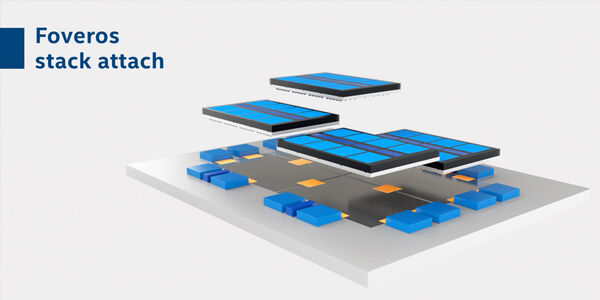
Intel Unveils New Tools in Its Advanced Chip Packaging Toolbox
"This week at SEMICON West in San Francisco, Intel engineering leaders provided an update on Intel’s advanced packaging capabilities and unveiled new building blocks, including innovative uses of EMIB and Foveros together and a new Omni-Directional Interconnect (ODI) technology. When combined with Intel’s world-class process technologies, new packaging capabilities will unlock customer innovations and deliver the computing systems of tomorrow. “Our vision is to develop leadership technology to connect chips and chiplets in a package to match the functionality of a monolithic system-on-chip. A heterogeneous approach gives our chip architects unprecedented flexibility to mix and match IP blocks and process technologies with various memory and I/O elements in new device form factors. Intel’s vertically integrated structure provides an advantage in the era of heterogeneous integration, giving us an unmatched ability to co-optimize architecture, process and packaging to deliver leadership products.” –Babak Sabi, Intel corporate vice president, Assembly and Test Technology Development Why It’s Important: Chip packaging has always played a critical – if under-recognized – role in the electronics supply chain. As the physical interface between the processor and the motherboard, the package provides a landing zone for a chip’s electrical signals and power supply." [...]
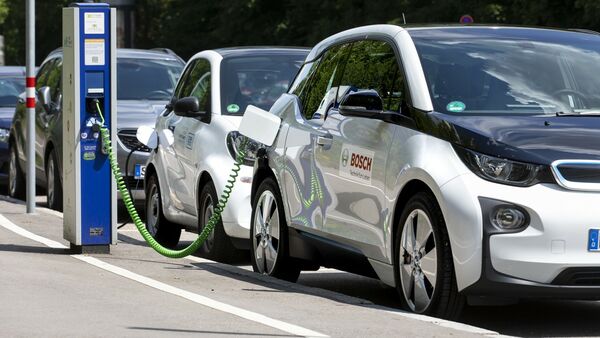
Bosch extends the service life of electric-vehicle batteries
"Stress makes cells age faster. Something that geneticists have long since demonstrated for the human body is also true for electric-vehicle battery cells. The older the batteries get, the lower their performance and capacity, and the shorter the range of the vehicle. To help batteries last longer, Bosch is developing new cloud services that supplement the individual vehicles’ battery-management systems. “Bosch is connecting electric-vehicle batteries with the cloud. Its data-based services mean we can substantially improve batteries’ performance and extend their service life,” says Dr. Markus Heyn, member of the board of management of Robert Bosch GmbH." [...]

Virgin Orbit's Rocket-Launching 747 Jumbo Jet Nails 1st Drop Test
"The Virgin Galactic sister company performed its first-ever drop test today (July 10), releasing a LauncherOne rocket from its Boeing 747 carrier plane over California's Mojave Desert. "Now THAT's what I call a drop test! Video from today's very successful drop test of our #LauncherOne small satellite launch vehicle. More photos and videos coming soon," Virgin Orbit representatives wrote on Twitter today. Related: Gallery: Virgin Orbit's LauncherOne Rocket for Satellite Missions During operational flights, the 70-foot-long (21 meters) rocket will fire up after the drop and then carry its payload to orbit. But that didn't happen today; the booster simply free-fell to the desert floor, where it presumably made a pretty big hole." [...]

NVIDIA Breaks Eight AI Performance Records
"You can’t be first if you’re not fast. Inside the world’s top companies, teams of researchers and data scientists are creating ever more complex AI models, which need to be trained, fast. That’s why leadership in AI demands leadership in AI infrastructure. And that’s why the AI training results released today by MLPerf matter. Across all six of six MLPerf categories, NVIDIA demonstrated world-class performance and versatility. Our AI platform set eight records in training performance, including three in overall performance at scale and five on a per-accelerator basis." [...]
Ciência e Tecnologia
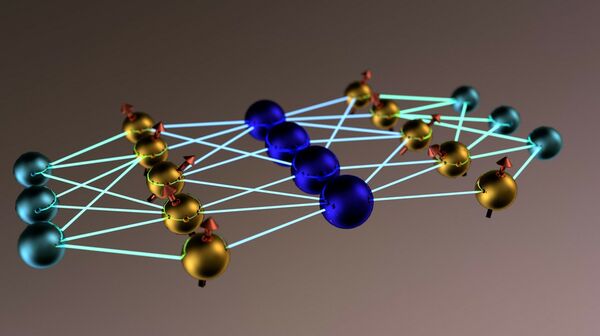
Simulating quantum systems with neural networks
"A new computational method, based on neural networks, can simulate open quantum systems with unprecedented versatility. The method was independently developed by physicists at EPFL, France, the UK, and the US, and is published in Physical Review Letters. Even on the scale of everyday life, nature is governed by the laws of quantum physics. These laws explain common phenomena like light, sound, heat, or even the trajectories of balls on a pool table. But when applied to a large number of interacting particles, the laws of quantum physics actually predict a variety of phenomena that defy intuition. In order to study quantum systems made of many particles, physicists must first be able to simulate them." [...]
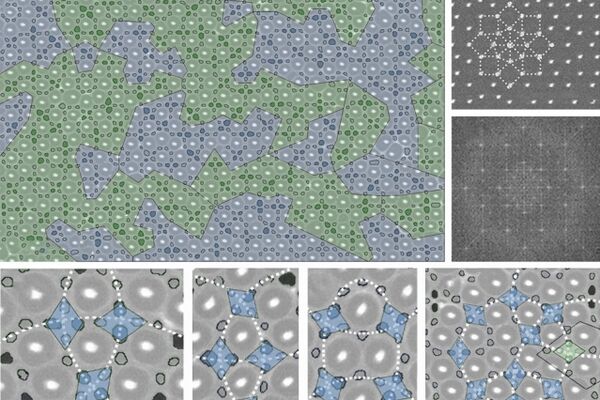
A new way of making complex structures in thin films
"Self-assembling materials can form patterns that might be useful in optical devices. Self-assembling materials called block copolymers, which are known to form a variety of predictable, regular patterns, can now be made into much more complex patterns that may open up new areas of materials design, a team of MIT researchers say. The new findings appear in the journal Nature Communications, in a paper by postdoc Yi Ding, professors of materials science and engineering Alfredo Alexander-Katz and Caroline Ross, and three others. “This is a discovery that was in some sense fortuitous,” says Alexander-Katz. “Everyone thought this was not possible,” he says, describing the team’s discovery of a phenomenon that allows the polymers to self-assemble in patterns that deviate from regular symmetrical arrays. Self-assembling block copolymers are materials whose chain-like molecules, which are initially disordered, will spontaneously arrange themselves into periodic structures." [...]
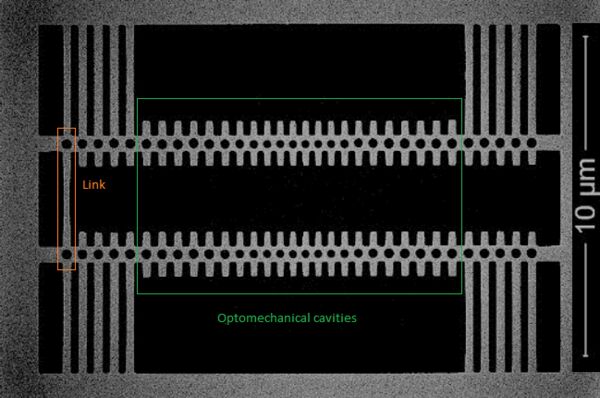
Spontaneous synchronisation achieved at the nanoscale
"Researchers from the ICN2 Phononic and Photonic Nanostructures Group have led a research which synchronised for the first time a couple of optomechanical oscillators. This work sets a solid basis for producing reconfigurable networks of such oscillators, with potential applications in neuromorphic computing, a field of research that intends to imitate neurological structures to improve computation. At the end of a live show, the audience requests an “Encore” under a rhythmic beat. What made rhythm emerge from the initially disperse claps? Why do flocks of birds or schools of fishes all move in unison without knowing each other’s intention? These seemingly unrelated phenomena, and many more, from the subatomic level to cosmic scales, are all the result of a phenomenon called synchronisation." [...]
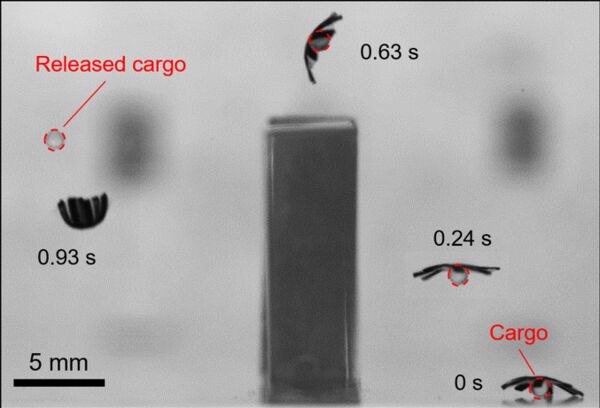
Jellyfish-inspired robot wins Best Paper Award in prestigious robotics conference
"The scientists at the Max Planck Institute for Intelligent Systems in Stuttgart who invented Jellyfishbot win the Best Paper Award at a prestigious robotics conference and have their work published in Nature Communications. Their research holds great potential when investigating the impact of environmental changes in the ocean’s ecosystem. Another aim is for Jellyfishbot to be applied in the treatment of cancer. Stuttgart - Scientists at the Max Planck Institute for Intelligent Systems (MPI-IS) have developed a robot that looks and moves like a jellyfish, one of the world’s most common marine animals. The team named their invention “Jellyfishbot”. The untethered robot features an umbrella-shaped bell and trailing tentacles, just like its natural model." [...]
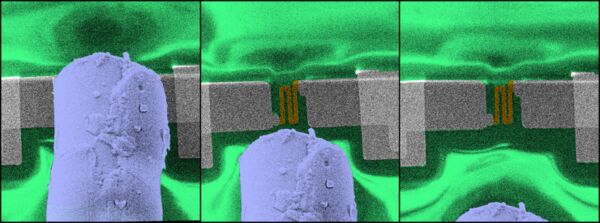
Tiny Supersonic Jet Injector Accelerates Nanoscale Additive Manufacturing
"By energizing precursor molecules using a tiny, high-energy supersonic jet of inert gas, researchers have dramatically accelerated the fabrication of nanometer scale structures. The rapid additive manufacturing technique also allows them to produce structures with high aspect ratios. Now, a theory developed to describe the technique could lead to new applications for additive nanomanufacturing and new nanoscale materials. Based on focused electron beam deposition, the technique allows structures to be fabricated from gas-phase precursors at rates approaching what could be expected in the liquid phase – all without raising the temperature of substrates. That could lead to manufacturing of the nanometer-scale structures at rates that could make them practical for use in magnetic memory, high-frequency antennas, quantum communication devices, spintronics and atomic-scale resonators. “We are controlling matter on the atomic scale to bring about new modes of additive manufacturing,” said Andrei Fedorov, a professor in the George W. Woodruff School of Mechanical Engineering at the Georgia Institute of Technology." [...]

Molecular thumb drives: Researchers store digital images in metabolite molecules
"In a step toward molecular storage systems that could hold vast amounts of data in tiny spaces, Brown University researchers have shown it’s possible to store image files in solutions of common biological small molecules. DNA molecules are well known as carriers of huge amounts of biological information, and there is growing interest in using DNA in engineered data storage devices that can hold vastly more data than our current hard drives. But new research shows that DNA isn’t the only game in town when it comes to molecular data storage. A study led by Brown University researchers shows that it’s possible to store and retrieve data stored in artificial metabolomes — arrays of liquid mixtures containing sugars, amino acids and other types of small molecules. For a paper published in the journal PLOS ONE, the researchers showed that they could encode kilobyte-scale image files into metabolite solutions and read the information back out again. “This is a proof-of-concept that we hope makes people think about using wider ranges of molecules to store information,” said Jacob Rosenstein, a professor in Brown’s School of Engineering and senior author of the study." [...]

Making wireless communication more energy efficient
"Along with studying theory, "it's also important to me that the work we are doing will help to solve real-world problems,” says LIDS student Omer Tanovic. Omer Tanovic, a PhD candidate in the Department of Electrical Engineering and Computer Science, joined the Laboratory for Information and Decision Systems (LIDS) because he loves studying theory and turning research questions into solvable math problems. But Omer says that his engineering background — before coming to MIT he received undergraduate and master’s degrees in electrical engineering and computer science at the University of Sarajevo in Bosnia-Herzegovina — has taught him never to lose sight of the intended applications of his work, or the practical parameters for implementation. “I love thinking about things on the abstract math level, but it’s also important to me that the work we are doing will help to solve real-world problems,” Omer says. “Instead of building circuits, I am creating algorithms that will help make better circuits.” One real-world problem that captured Omer’s attention during his PhD is power efficiency in wireless operations. The success of wireless communications has led to massive infrastructure expansion in the United States and around the world." [...]

Tuning the energy levels of organic semiconductors
"Physicists from the Dresden Integrated Center for Applied Physics and Photonic Materials (IAPP) and the Center for Advancing Electronics Dresden (cfaed) at the TU Dresden, together with researchers from Tübingen, Potsdam and Mainz were able to demonstrate how electronic energies in organic semiconductor films can be tuned by electrostatic forces. A diverse set of experiments supported by simulations were able to rationalize the effect of specific electrostatic forces exerted by the molecular building blocks on charge carriers. The study was published recently in Nature Communications. In electronic devices based on organic semiconductors such as solar cells, light-emitting diodes, photodetectors or transistors, electronic excitations and charge transport levels are important concepts to describe their operation principles and performances. The corresponding energetics, however, are more difficult to access and to tune than in conventional inorganic semiconductors like silicon chips, which stands as a general challenge. This applies both to the measurement and to the controlled influence from outside." [...]
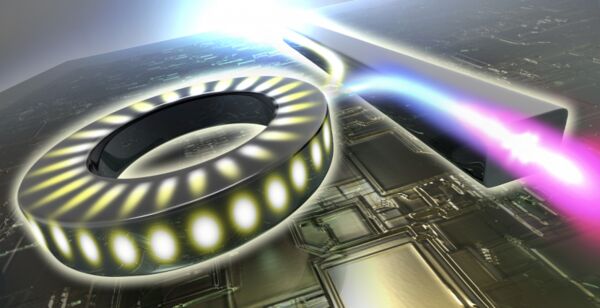
Micro ring resonator has highest quality factor to date
"MIT, Singapore researchers show high-quality photonic device based on amorphous silicon carbide. Researchers at MIT and Singapore University of Technology (SUTD) have demonstrated a micro ring resonator made of amorphous silicon carbide with the highest quality factor to date. The resonator shows promise to be used as an on-chip photonic light source at the infrared telecom wavelength of 1,550 nanometers. Ordinary daylight will pass through a window unaltered, in a process called linear transmission, but the same light passing through a prism will split into a rainbow of colors. Similarly in photonic devices, infrared light from a laser can pass through in linear fashion without changing its “color,” but at high intensity, the light can exhibit nonlinear behavior, generating additional colors, or wavelengths. For example, a single yellow laser coupled to a photonic device can generate blue, green, yellow, or orange colors." [...]
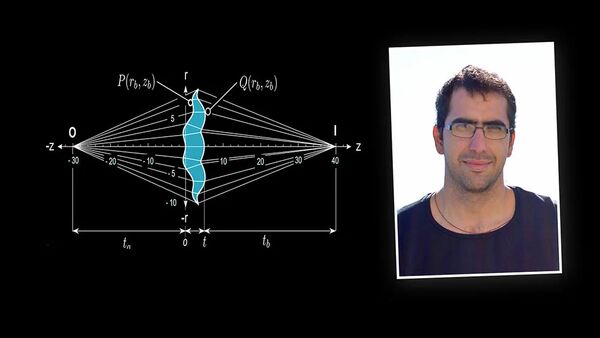
Goodbye Aberration: Physicist Solves 2,000-Year-Old Optical Problem
"When you look through your viewfinder and things seem a little bit blurry or lacking definition, it’s probably because you are using an “el cheapo” lens. So you read reviews and buy a much more expensive lens, and what do you do next? You don’t go out to learn about composition and lighting to make better pictures. No. If you are a conscious and professional photographer, you start pixel-peeping to rationalize your expensive purchase. And what do you find then?" [...]
'Tsunami' on a silicon chip: a world first for light waves
"Could improve photonic communications devices and infrastructure A collaboration between the Sydney Nano Institute and Singapore University of Technology and Design has for the first time manipulated a light wave, or photonic information, on a silicon chip that retains its overall 'shape'. A tsunami holds its wave shape over very long distances across the ocean, retaining its power and ‘information’ far from its source. In communications science, retaining information in an optic fibre that spans continents is vital. Ideally, this requires the manipulation of light in silicon chips at the source and reception end of the fibre without altering the wave shape of the photonic packet of information. Doing so has eluded scientists until now. A collaboration between the University of Sydney Nano Institute and Singapore University of Technology and Design has for the first time manipulated a light wave, or photonic information, on a silicon chip that retains its overall ‘shape’." [...]
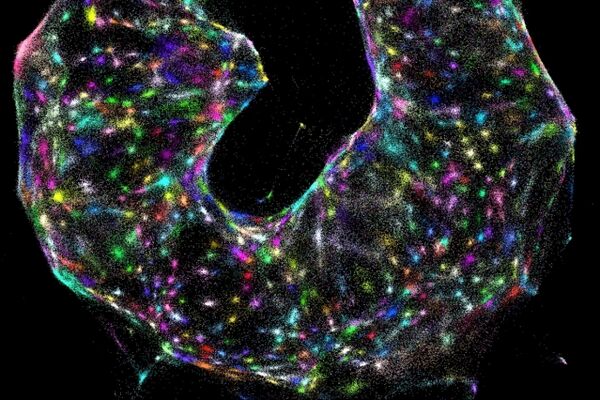
A chemical approach to imaging cells from the inside
"Researchers develop a new microscopy system for creating maps of cells, using chemical reactions to encode spatial information. The following press release was issued today by the Broad Institute of MIT and Harvard. A team of researchers at the McGovern Institute and Broad Institute of MIT and Harvard has developed a new technique for mapping cells. The approach, called DNA microscopy, shows how biomolecules such as DNA and RNA are organized in cells and tissues, revealing spatial and molecular information that is not easily accessible through other microscopy methods. DNA microscopy also does not require specialized equipment, enabling large numbers of samples to be processed simultaneously. “DNA microscopy is an entirely new way of visualizing cells that captures both spatial and genetic information simultaneously from a single specimen,” says first author Joshua Weinstein, a postdoctoral associate at the Broad Institute." [...]

3D printed prosthetic hand can guess how you play Rock, Paper, Scissors
"A new 3D-printed prosthetic hand can learn the wearers’ movement patterns to help amputee patients perform daily tasks, reports a study published this week in Science Robotics. Losing a limb, either through illness or accident, can present emotional and physical challenges for an amputee, damaging their quality of life. Prosthetic limbs can be very useful but are often expensive and difficult to use. The Biological Systems Engineering Lab at Hiroshima University has developed a new 3D printed prosthetic hand combined with a computer interface, which is their cheapest, lightest model that is more reactive to motion intent than before. Previous generations of their prosthetic hands have been made of metal, which is heavy and expensive to make. Professor Toshio Tsuji of the Graduate School of Engineering, Hiroshima University describes the mechanism of this new hand and computer interface using a game of “Rock, Paper, Scissors”." [...]
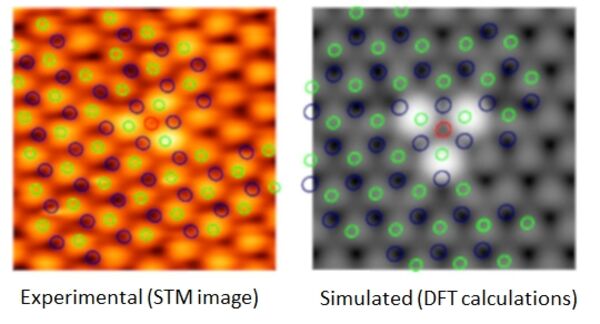
Localised excitons in 2D materials for integrated quantum optics
"NUS scientists have found that the oxygen interstitials in single-layer tungsten diselenide (WSe2) enable it to function as single photon emitters (SPEs) for quantum optical applications. Two-dimensional (2D) materials with atomically thin honeycomb-like lattices were recently discovered experimentally for use as SPEs. SPEs emit light as single particles or photons one at a time and they play an important role in quantum optics and quantum information processing. SPEs developed using 2D materials such as WSe2, provide flexibility for potential device and circuit integration in a semiconductor manufacturing environment. However, the nature of these experimentally discovered SPEs in WSe2 is not clear and this hinders their potential use in quantum applications. Prof Su Ying QUEK from the Department of Physics, NUS and her research team have identified that the single photon emissions coming from the localised exciton states in WSe2 were due to the oxygen interstitials present in the single-layer 2D material." [...]

‘Digital alchemy’ to reverse-engineer new materials
"In work that upends materials design, researchers have demonstrated with computer simulations that they can design a crystal and work backward to the particle shape that will self-assemble to create it. It could lead to a new class of materials, such as crystal coatings that produce colors that never fade. “These results turn materials design and our understanding of entropy on their heads,” said Sharon Glotzer, the Anthony C. Lembke Department Chair of Chemical Engineering at the University of Michigan and senior author on the paper in Science Advances. Materials with truly new properties typically have to be discovered by accident. For example, it took a playful experiment with cellophane tape and a lump of graphite to discover graphene in 2004—now a Nobel-winning wonder material for its combination of strength, flexibility, transparency and conductivity. Rather than waiting around for serendipity, materials scientists would like to dream up a wonder material and then figure out how to make it." [...]
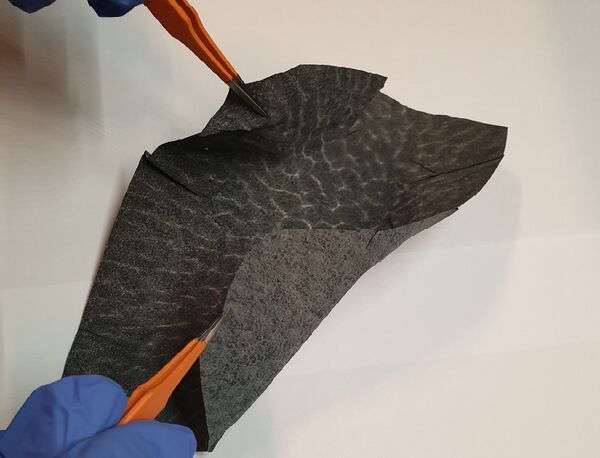
Paper-Thin and Flexible Batteries May Mean Better Power Sources for Space Travel & IoT Devices
"Batteries are ubiquitous in our daily lives: they power everything from cell phones to cars, homes, aircraft and even spaceships. They are critical in enabling the next generation of electric vehicles and large-scale stationary energy storage. Yet, despite rapid advances in battery performance, battery applications are also advancing rapidly and this is creating the need for even higher performing batteries. What is the future of battery development? Can we make better batteries that can store more energy, safely? I am leading a team of researchers at Khalifa University looking to achieve just that in an affordable and scalable manner by advancing a paper-thin, flexible lithium-ion battery with all the energy density and safety features necessary for space applications, but which will also have huge implications for robotics and emerging Internet of Things (IoT) technologies in the post-Fourth Industrial Revolution world." [...]

Upside-down 3D-printed skin and bone, for humans to Mars
"3D printing human tissue could help keep astronauts healthy all the way to Mars. An ESA project has produced its first bioprinted skin and bone samples. These state-of-the-art samples were prepared by scientists from the University Hospital of Dresden Technical University (TUD), part of the project consortium together with OHB System AG as the prime contractor, and life sciences specialist Blue Horizon. “Skin cells can be bioprinted using human blood plasma as a nutrient-rich ‘bio-ink’ – which would be easily accessible from the mission crewmembers,” comments Nieves Cubo from TUD. “However, plasma has a highly fluid consistency, making it difficult to work with in altered gravitational conditions. We therefore developed a modified recipe by adding methylcellullose and alginate to increase the viscosity of the substrate." [...]
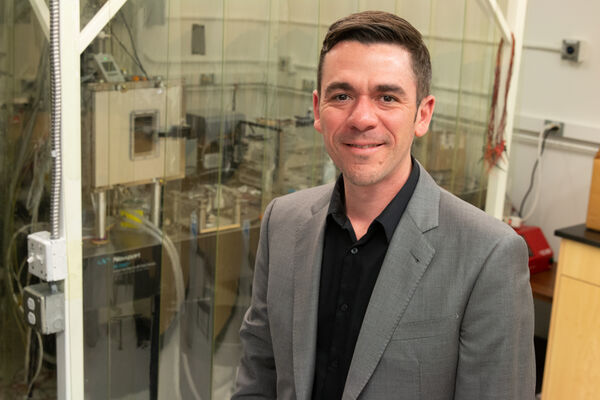
Beat The Heat
"It’s estimated that as much as two-thirds of energy consumed in the U.S. each year is wasted as heat. Take for example, car engines, laptop computers, cellphones, even refrigerators, that heat up with overuse. Imagine if you could capture the heat they generate and turn it into more energy. University of Utah mechanical engineering associate professor Mathieu Francoeur has discovered a way to produce more electricity from heat than thought possible by creating a silicon chip, also known as a “device,” that converts more thermal radiation into electricity. His findings were published in the paper, “A Near-Field Radiative Heat Transfer Device,” in the newest issue of Nature Nanotechnology. A copy of the paper can be viewed here." [...]

Producing Graphene from Carbon Dioxide
"The general public knows the chemical compound of carbon dioxide as a greenhouse gas in the atmosphere and because of its global-warming effect. However, carbon dioxide can also be a useful raw material for chemical reactions. A working group at Karlsruhe Institute of Technology (KIT) has now reported on this unusual application in the ChemSusChem journal. They are using carbon dioxide as a raw material to produce graphene, a technological material which is currently the subject of intense study. (DOI: 10.1002/cssc.201901404) The combustion of fossil fuels such as coal and oil produces energy for electricity, heat and mobility, but it also leads to an increase of the amount of carbon dioxide in the atmosphere and therefore to global warming. Cutting this causal chain is what motivates scientists to search for alternative energy sources but also for alternative uses of carbon dioxide." [...]

Robot-ants that can jump, communicate and work together
"Individually, ants have only so much strength and intelligence. However, as a colony, they can use complex strategies to complete sophisticated tasks and evade larger predators. At EPFL, robotics researchers in Professor Jamie Paik’s Laboratory have reproduced this phenomenon, developing tiny robots that display minimal physical intelligence on an individual level but that are able to communicate and act collectively. Despite being simple in design and weighing only 10 grams, each robot has multiple locomotion modes to navigate any type of surface. Collectively, they can quickly detect and overcome obstacles and move objects much larger and heavier than themselves. The related research has been published in Nature." [...]
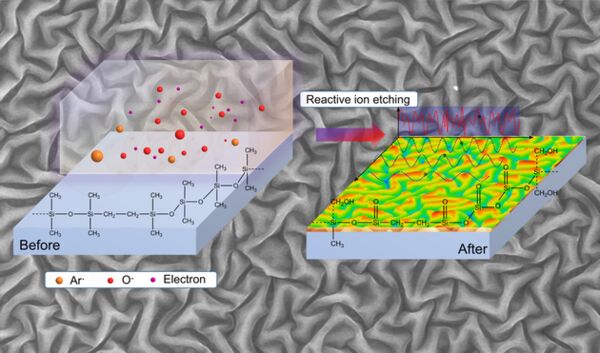
Trapped light particles: Dresden physicists use nanostructures to free photons for highly efficient white OLEDs
"Thanks to intensive research in the past three decades, organic light-emitting diodes (OLEDs) have been steadily conquering the electronics market - from OLED mobile phone displays to roll-out television screens, the list of applications is long. Current OLED research focuses in particular on improving the performance of white OLEDs for lighting elements such as ceiling or car interior lighting. These components are subject to much stricter requirements in terms of stability, angular emission and power efficiency. Since light-emitting diodes only produce monochrome light, manufacturers use various additive colour-mixing processes to produce white light. Since the first development of white OLEDs in the 1990s, numerous efforts have been made to achieve a balanced white spectrum and high luminous efficacy at a practical luminance level. However, the external quantum efficiency (EQE) for white OLEDs without additional outcoupling techniques can only reach 20 to 40 percent today." [...]
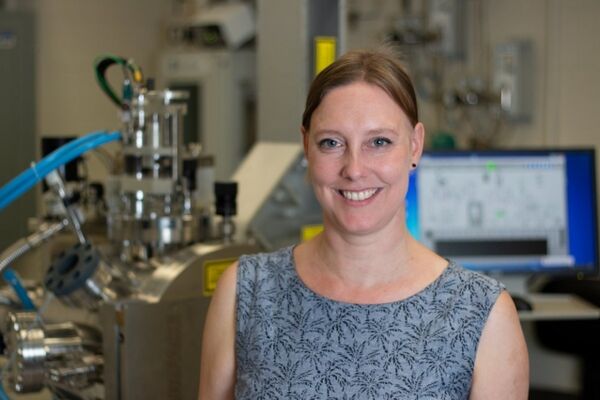
Enriching solid-state batteries
"MIT researchers demonstrate a method to make a smaller, safer, and faster lithium-rich ceramic electrolyte. Researchers at MIT have come up with a new pulsed laser deposition technique to make thinner lithium electrolytes using less heat, promising faster charging and potentially higher-voltage solid-state lithium ion batteries. Key to the new technique for processing the solid-state battery electrolyte is alternating layers of the active electrolyte lithium garnet component (chemical formula, Li6.25Al0.25La3Zr2O12, or LLZO) with layers of lithium nitride (chemical formula Li3N). First, these layers are built up like a wafer cookie using a pulsed laser deposition process at about 300 degrees Celsius (572 degrees Fahrenheit). Then they are heated to 660 C and slowly cooled, a process known as annealing. During the annealing process, nearly all of the nitrogen atoms burn off into the atmosphere and the lithium atoms from the original nitride layers fuse into the lithium garnet, forming a single lithium-rich, ceramic thin film." [...]
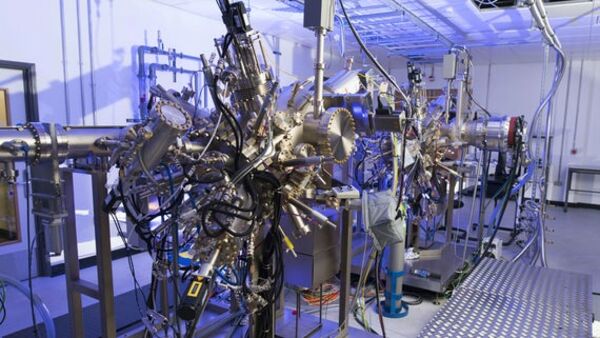
Cardiff in world-beating CS breakthrough
"Cardiff University researchers have developed world-leading Compound Semiconductor (CS) technology that can drive future high-speed data communications. A team from the Institute for Compound Semiconductors (ICS) worked with collaborators to innovate an ultrafast and highly sensitive ‘avalanche photodiode’ (APD) that creates less electronic ‘noise’ than its silicon rivals. APDs are highly sensitive semiconductor devices that exploit the ‘photoelectric effect’ – when light hits a material - to convert light to electricity. Faster, supersensitive APDs are in demand worldwide for use in high-speed data communications and light detection and ranging (LIDAR) systems for autonomous vehicles. A paper outlining the breakthrough in creating extremely low excess noise and high sensitivity APDs is published today in Nature Photonics. Cardiff researchers led by Sêr Cymru Professor Diana Huffaker, Scientific Director of ICS and Sêr Cymru Chair in Advanced Engineering and Materials, partnered with the University of Sheffield and the California NanoSystems Institute, University of California, Los Angeles (UCLA) to develop the technology." [...]
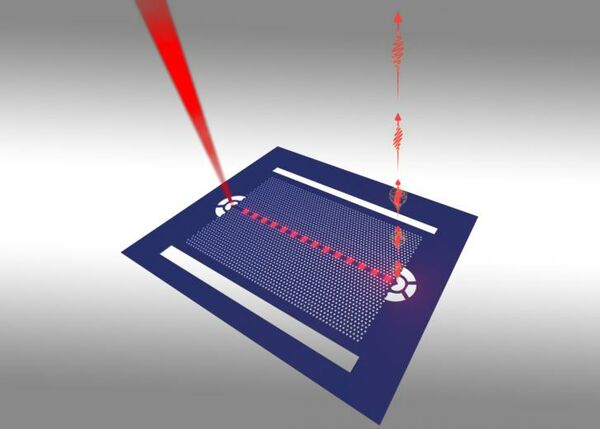
U.S. Naval Research Laboratory ‘connects the dots’ for quantum networks
"Researchers at the U.S. Naval Research Laboratory (NRL) developed a new technique that could enable future advancements in quantum technology. The technique squeezes quantum dots, tiny particles made of thousands of atoms, to emit single photons (individual particles of light) with precisely the same color and with positions that can be less than a millionth of a meter apart. “This breakthrough could accelerate the development of quantum information technologies and brain-inspired computing,” said Allan Bracker, a chemist at NRL and one of the researchers on the project. In order for quantum dots to “communicate” (interact), they have to emit light at the same wavelength. The size of a quantum dot determines this emission wavelength." [...]
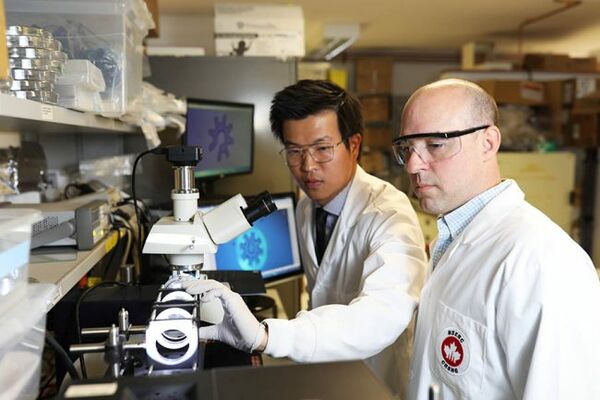
Microrobots to change the way we work with cellular material
"In a new study published in the Proceedings of the National Academy of Sciences, researchers in the lab of Professor Aaron Wheeler (Chemistry, IBBME) have demonstrated a novel and non-invasive way to manipulate cells through microrobotics. Cell manipulation — which requires moving small particles from one place to another — is an integral part of many scientific endeavours. One method of manipulating cells is through optoelectronic tweezers (OET), which use various light patterns to directly interact with the object of interest. Because of this direct interaction, there are limitations to the force that can be applied and speed in which the cellular material can be manipulated. This is where the use of microrobotics becomes useful. Led by postdoctoral fellow Dr. Shuailong Zhang (Chemistry) and Wheeler, the researchers have designed microrobots (working at the sub-millimetre scale) that can be operated by OET for cell manipulation." [...]
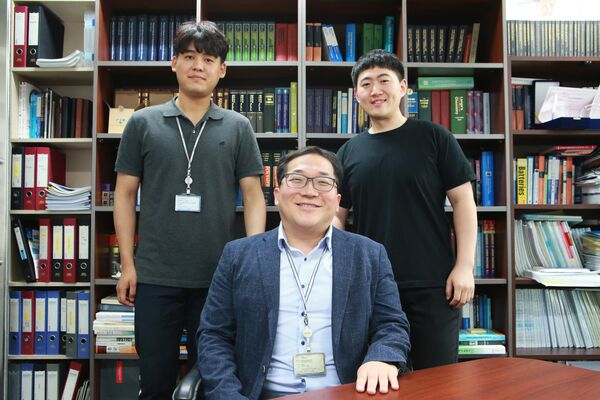
Development of 3D Electrochemical Model to Improve Battery Energy Density and Efficiency of Electric Vehicles
"A model that can have a 3D observation of micrometer-sized particles in a cell has been developed. Through the analysis and research of micrometer-sized particles in a cell, this model is expected to enhance energy efficiency of cells. DGIST announced that Professor Yong Min Lee’s team in the Department of Energy Science & Engineering developed ‘micron1 single particle electrochemical model’ that can estimate the electrochemical properties of a single particle of electrode active materials2 in 3D. The 3D observations of the single particles of electrode active materials, which are difficult to be identified in an experiment, are expected to be applied to research electrochemical phenomena and particle designs that enhance cell efficiency. Although a secondary cell is commonly used as the power source of electric vehicles, it is still not as efficient as internal combustion engine. Its efficiency can be improved by increasing the energy density of the cells, R&D has not been actively carried out due to the limitations in precise analysis technology." [...]

NASA Invests in 3D Printing for Aviation
"Additive manufacturing (AM), also known as 3D printing, is a promising new technology for all areas of aviation manufacturing. Additive manufacturing's flexibility in design and customization, cost reduction, and speed in delivering finished parts make it a perfect fit for creating parts used in aviation contexts. At the leading edge of this new frontier in aviation is Carnegie Mellon University's Next Manufacturing Center and Manufacturing Futures Initiative (MFI). Carnegie Mellon has been selected by the National Aeronautics and Space Administration (NASA) to lead a research team dedicated to examining new ways to build and power aircraft of the future, through NASA's University Leadership Initiative. As part of the Transformative Aeronautics Concepts Program, Carnegie Mellon will help solve the nation's most pressing problems in aviation. Carnegie Mellon's project will be led by Tony Rollett and Jack Beuth, faculty co-directors of Next Manufacturing, and will include additional Carnegie Mellon faculty Erica Fuchs, Elizabeth Holm and Kenji Shimada." [...]
Modelos 3D
Com a disponibilidade de ferramentas que permitem dar azo a nossa imaginação na criação de peças 3D e espaços como o thingiverse para as publicar, esta rubrica apresenta alguns modelos selecionados que poderão ser úteis.

Easy 3D Printed Objects in One Hour
"A while ago I gave a 3D printer demonstration at a primary school. I used a small Up Plus 2 printer which always works fine. This isn't the fastest 3D printer, and It took about 40 minutes to print a very small object. And all children watched attentively during the time it took to print the item. Nowadays 3D printers are available at more and more schools and other locations (like Makerspaces). Partly because these have become more affordable in recent years." [...]
Documentação
A documentação é parte essencial do processo de aprendizagem e a Internet além de artigos interessantes de explorar também tem alguma documentação em formato PDF interessante de ler. Todos os links aqui apresentados são para conteúdo disponibilizado livremente pelo editor do livro.
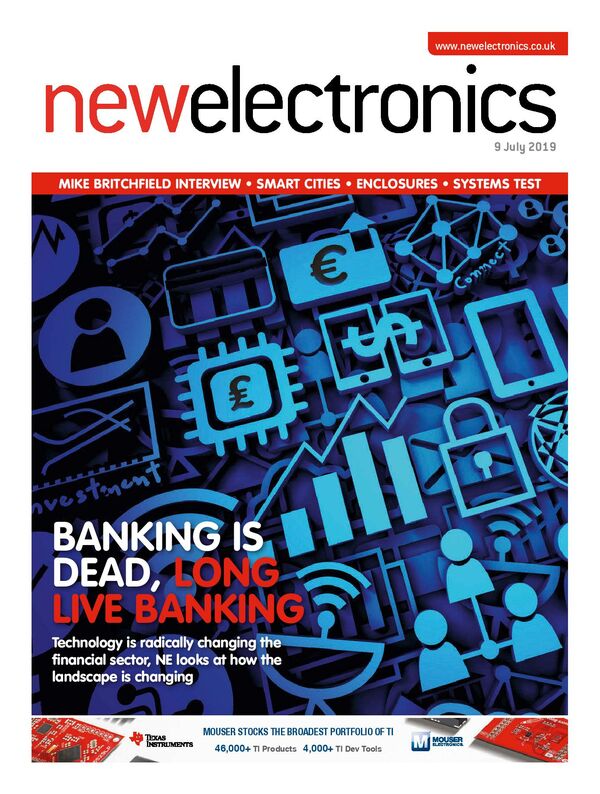
newelectronics 9 Julho 2019
"New Electronics is a fortnightly magazine focusing on technological innovation, news and the latest developments in the electronics sector. Downloadable as a digital page turner or pdf file, or offered as a hard copy, the New Electronics magazine is available in a format to suit you. " [...]
Projetos Maker
Diversos Projetos interessantes.
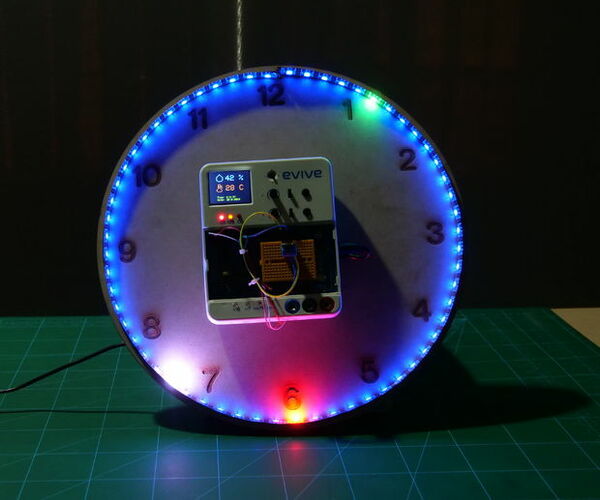
RGB LED Wall Clock With Temperature Sensor Using Evive- Arduino Based Embedded Platform
"Wall clocks are perhaps the single most important accessory that has the ability to completely change a previously plain living room into a smart, ultra-modern one! And that is exactly what were here for today: making a smart DIY RGB LED wall clock that wont only make your room attractive and grab the attention of everybody who visits, but also display the date, temperature, and humidity in real-time! And helping us make it smart is evive and PictoBlox - a graphical programming software with advanced hardware-interaction capabilities. You can download it from HERE. Whos with us for making this super cool wall clock? Lets begin!" [...]
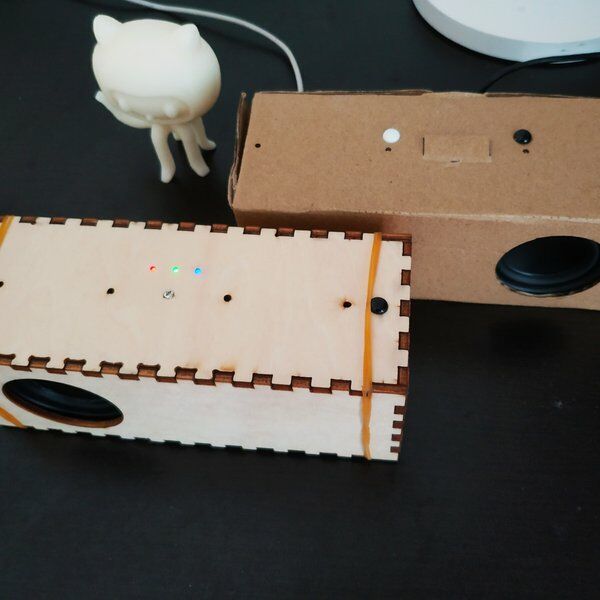
Smart Speaker from Scratch
"Make an open source smart speaker for daily use The project is about to make an affordable, open source smart speaker. It should be able to run Amazon Alexa, Google Assistant, MyCroft, Home Assistant, Mopidy and etc. A case is required to make it suitable for daily use. Why should we make an open source smart speaker when there are so many smart speakers on the market? Because these smart speakers are designed from vendors' perspective, not from users' perspective. These smart speakers have two issues: + privacy - these speakers are always-listening black boxes which scare lots of people + functionality - these speakers can be more powerful but are limited by the vendors In 2014, the Amazon Echo was released." [...]
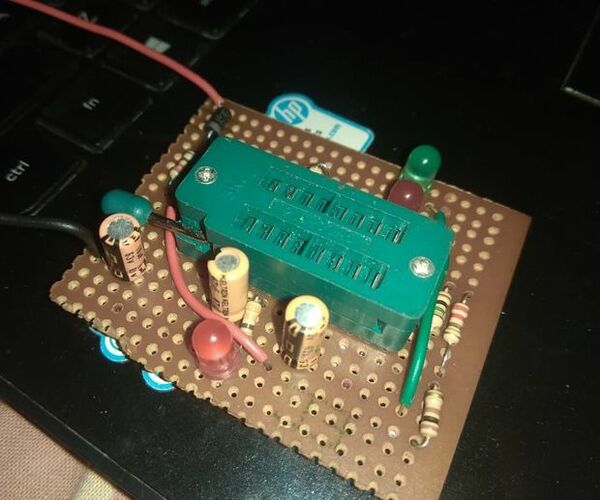
OPAMP(741 Types) AND 555 TESTER
"OPAMPS and 555 timers are one of the widely used electronic ICs that we use regularly, So we need to make sure that whether ICs are working correctly or is faulty. Thus we need to make a tester that will help us to test whether those ICs are working properly. If tester does not give desired output, then the IC can be faulty and needs to be replaced. Therefore a tester should be made and must be handy and portable. Here we considered only the 741 OPAMP IC types and equivalent. And the standard 555 timer IC." [...]

"I Spy" Game With Arduino
"Everyone knows the game "I Spy" from his childhood. Let's build an electronic version with the Arduino. For the prototype you need an Arduino (I'm using an Arduino Uno here), a color sensor, a display (with I2C connector so you don't have to use so much pins), a piezo buzzer and four buttons. And of course some cables and resistors. The game works like this: The first player looks for an object in the room in one of the four colors red, yellow, green or blue. Then he presses the corresponding button." [...]

Room Temperature Prediction Via LM35 Sensor and Machine Learning
"Introduction Today we are focused on building a machine learning project that predicts temperature via polynomial regression. Machine learning is an application of artificial intelligence (AI) that provides systems the ability to automatically learn and improve from experience without being explicitly programmed. Machine learning focuses on the development of computer programs that can access data and use it learn for themselves. Polynomial Regression:-polynomial regression is a form of regression analysis in which the relationship between the independent variable x and the dependent variable y is modelled as an nth degree polynomial in x. Prediction:-Machine learning is a way of identifying patterns in data and using them to automatically make predictions or decisions. ... For regression, you will learn how to measure the correlation between two variables and compute a best-fit line for making predictions when the underlying relationship is linear." [...]
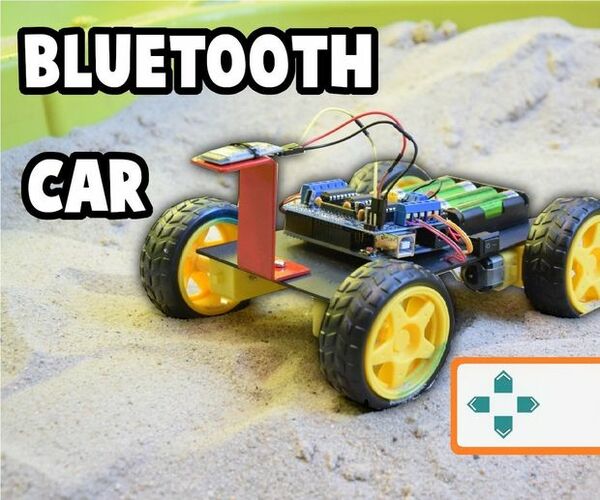
Simple CAR Arduino Bluetooth Controlled
"In this project i will show you how use the Bluetooth module to control a car through commands coming from a smartphone. List element: - Bluetooth HC-06 - Arduino uno - L293D motor shield - Plexi 17cm x 10cm - 4x TT gear Motor - 4x wheels - 4x Battery AA - Battery holder - Wires - Switch" [...]

Low Ohmic Resistance Meter With INA219 Current Sensor
"This is a low cost milliohm meter which can be put together by using 2X INA219 current sensor, Arduino nano, 2X16 LCD display, 150 Ohms load resistor and simple arduino code which the library can be found online. The beauty of this project is no precision current reference is needed as the current sensor will take care of the measurement. " [...]
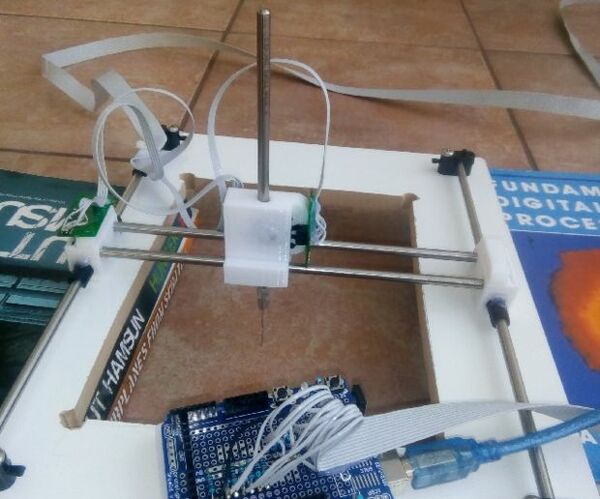
XYZ Point Scanner Using Salvaged Rotary Encoders
"Having acquired quite a large number of discarded rotary optical encoders from my work place, I finally decided to do something fun/useful with them. I've recently purchased a new 3D printer for my home and what could compliment it better than a 3D scanner! This project also provided me with the perfect opportunity to employ my 3D printer to manufacture the required parts. Supplies: - Optical encoders and corresponding optical sensors - Arduino UNO - optional prototyping shield - steel-bar rails - access to a 3D printer" [...]
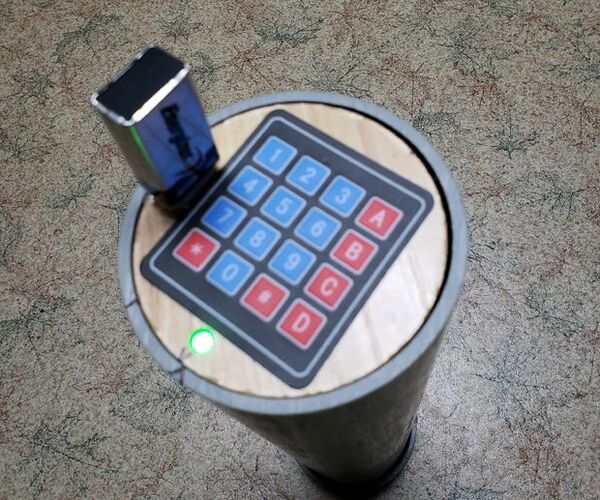
Gadget Cashe Post for Treasure Hunts
"Greetings Treasure Hunters! Another in the series of tools that I use to create treasure hunts, this is a gadget cashe made from a PVC tube. What is a gadget cashe? The word comes from our friends in the geo-cashing world to describe a place to hide something in plain sight that has a mechanical or electrical "gadgety" air about it. In this case a Arduino with servo, LED lights and keypad to in essence make a safe. Because this is for a treasure hunt I haven't gone super hard charger on making it bullet proof, bomb proof, or force-ably open-able." [...]
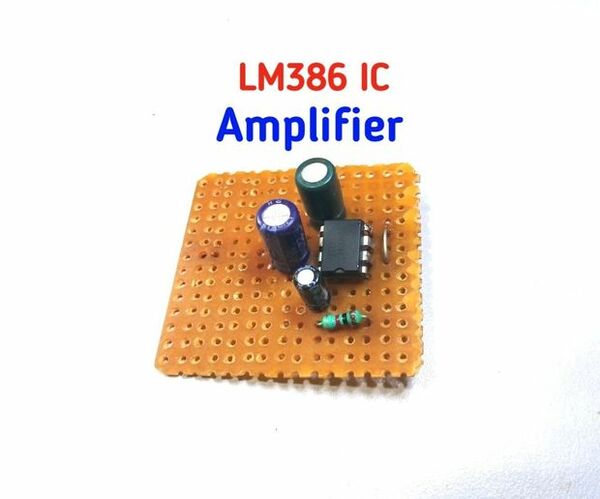
LM386 IC Amplifier
"Today I am going to make an audio amplifier.In this amplifier we will use LM386 IC.This IC amplifier sound is very good. Let's get started" [...]

Big LOVE Sign Marquee Letters
"This project was quite a challenge. The sign was to be 1.5 m high, and at the same time be quite light and resistant to impact. I received the order for letters from the wedding photographer, the product was to be useful in the outdoors for photo sessions as well as in the room during the wedding. If you want to see how I dealt with it I invite you to look through the instructions and watch the two-part video presenting the process of formation of this giant sign! Supplies: Materials: - 1 sheet of plywood 1.5 x 3m (~ 5 x 10ft) 10mm thick (~ 3/8 in) - 2 sheet of plywood 1.5 x 3m (~ 5 x 10ft) 5mm thick (~ 3/16 in) - 15x15mm (19/32 in) steel tube - 20mm (3/4 in) flat bar - WS2811 RGB LED 30mm milky module: http://ali.pub/3fn7ln - Contoller K-1000C: http://ali.pub/3fna0r - DC-DC converter SD-100A-12: http://ali.pub/3fncto - Single wires, three-core cables, 3-pin connectors - Screws for wood - M6 thumb screws - Small hinges and a lock - Paint, varnish - Wood glue Tools: - Circular saw - Jigsaw - Drill, driver - Nail gun - Orbital sander - Chop saw or table saw with cross cut sled - Angle grinder - Soldering iron Bakon 950D - Wire stripper: http://ali.pub/3fndpy - Side cutters: http://ali.pub/3fndpy - Drill bits - Brush and paint roller" [...]

LED Audio Visual Display
"RGB LED matrices are a common project for hobbyists who want to experiment with light displays, but often are either expensive, or restrictive in their size and configuration. The aim of this project was to create a reconfigurable display that could work as its own stand alone piece or as an interactive display controlled by a console using an assortment of Joysticks and Buttons. The display could be arranged in a variety of layouts from a matrix formation to a more static decorative linear strip. By attaching an assortment of Audio Sensors, Buttons and Joysticks the display could be switched between interactive and automatic modes, with configurable colours, effects, modes, speeds, brightness and patterns. Users can switch between modes and configurations using the MODE and CONFIG buttons, using the Joystick and SELECT button to make their choices. The users current choice is shown on the 16x2 LCD screen at the center of the console." [...]

Binary Clock V1.0
"Everybody loves binary clocks, especially the nerdy makers like me. In this instructable I will show you, how you can make your own binary clock using off-the-shelf and perfboard modules. I was not satisfied with the design of the ready made binary clocks from ebay or other sources, so I made my own. It uses only one colour, and the faceplate is symmetric, which makes it look much nicer. Supplies: Components: - Arduino Nano (any controller with 18 outputs and I2C) - DS1307 module (DS3231 can also be used) - 18 pcs 5mm super bright LED (I used blue ones) - 18 pcs 10kOhm resistor (I used SMD) - 18 pcs 100kOhm resistor (I used SMD) - 18 pcs generic diode - DC jack connector - 12V power supply - Small wooden box - Wires - Heat-shrink tubes (optional) - Perfboard Tools: - Soldering iron and solder - Electric drill - Hot glue gun - Basic tools" [...]

USB 10-digit Seven Segment Display Module
"This project is about an open-source, USB based, 10 digit seven segment display unit. This unit is specifically designed to work with POS systems and banking applications. Initially, this system is developed to work with PC based POS systems, and later it was modified to work with other applications.To simplify the communication interface this unit is designed to emulate a COM port in the host terminal. Because of this feature, this module can work with many systems without having any additional device driver(s).To extend the scope of this unit, it also comes with an option to switch between “direct mode” and “API mode”. In “direct mode” application or host device can directly send characters to the display unit over the emulated serial communication channel. The “API mode” is intended to provide more extensive features with this unit." [...]

CircuitPython Turtle Graphics
"You may have heard of, or even played around with, turtle graphics. Simply put, this is a metaphor for drawing vector images where you control a turtle that can drag a pen along with it. Commands to the turtle include things like move forward some distance, turn left or right by some angle, lift the pen off the paper (so that moving won't make a mark), or put it on the paper (so that moving will make a mark). There have been many on-screen implementations of turtle graphics, most notably the LOGO programming language. Versions have also been made that control a robot that has a pen so as to create on-paper copies of turtle drawings. This guide introduces a turtle graphics library for CircuitPython that is built on top of displayio for use on display based boards such as the PyPortal, PyBadge, and PyGamer." [...]

Ultra Simple, Ultra Small and Ultra Cheap Pet Monitor
"I do not know how many of us have met the following situation: we go for a walk with our pet companion, we let him go free and suddenly we do not see him again. Or we play in the yard of our house and they disappear. I'm sure I am not the only one that has this experience. I thought it would be good to get rid of my worries and help myself with something. That's how this Pet Monitor idea was born. I was inspired by this article." [...]
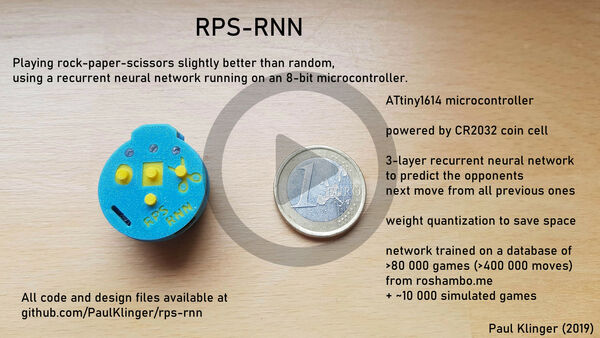
RPS-RNN
"A small electronic gizmo that plays rock paper scissors slightly better than random using a recurrent neural network. The physical assembly of this project is pretty close to that of my electronic dice. Some of the assembly tips there might also help here. " [...]
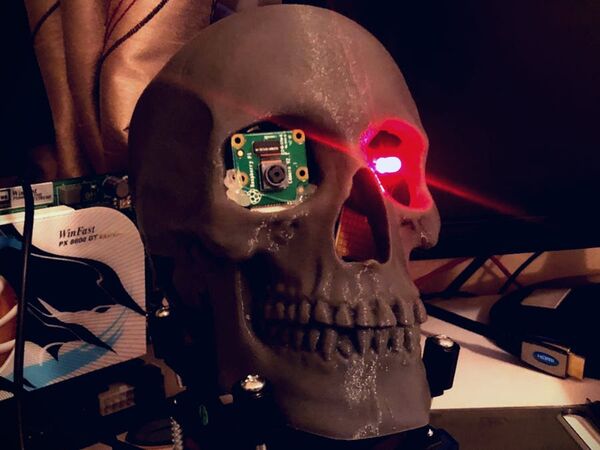
The Nvidianator
"The sequel to my Raspbinator Terminator Skull project. Skynet fights back. In January 2018, I finished a project I had been working on for quite some time – The Raspbinator; I was very happy with it and it got some good attention. But there were some bugs and limitations to it and I already ideas for the next one. Early in 2019, the Nvidia Jetson Nano was released and it had great capability for running machine learning; I thought this would be perfect for the next version of my project and a great opportunity to get into ML/Neural Nets. Also, with Terminator: Dark Fate coming out this year – what better time!" [...]
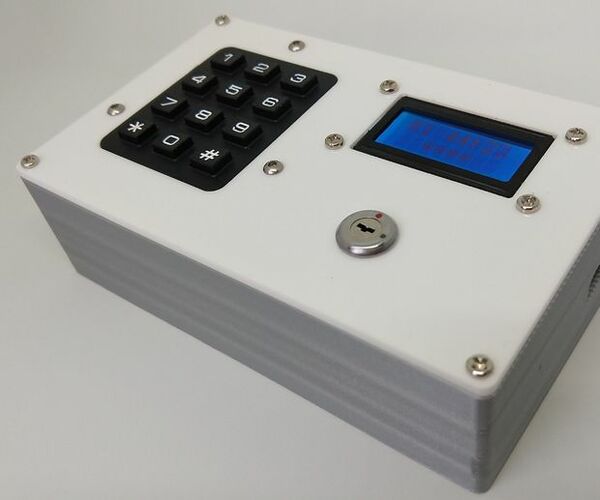
Escape Room Decoder Box
"Escape Rooms are awesomely fun activities which are highly engaging and great for teamwork. Have you ever thought about creating your own Escape Room? Well with this decoder box you can be well on your way! Even better have you thought about using escape rooms in education? We have and students love using them to learn, revise and engage with the material. This escape room decoder has the following features: 3 Rounds of codes with arbitrary length (1-8 digits) Configurable count-down timer Automated clue delivery (every 5 minutes) Configurable wrong-answer penalties In-game sound effects Supplies: To complete this project you will need the following parts: Hardware: - 4x Bolt M3 25mm - 3x Bolt M3 14mm - 4x Bolt M3 6mm - 4x M3 Standoff 6mm - 5x Lock Nut M3 - 4x Knurled Nut M3 - 3AAA Battery holder with leads - Key Switch - Dupont 2-way crimp connector (for battery holder) - 9x Jumper Wires (F-F) 20cm Electronics: - 1x 10K Trimpot - 1x Arduino Nano - Speaker - LCD Screen - Keypad - PCB - 2x 7Way Single IDC Header - 1x 7Way Dual IDC Header Fabricated Parts (3D Printed/Laser Cut): - 3D Printed Enclosure - 3D Printed Keypad Bracket - 3D Printed or lasercut LCD bracket - 3D Printed or lasercut faceplate" [...]
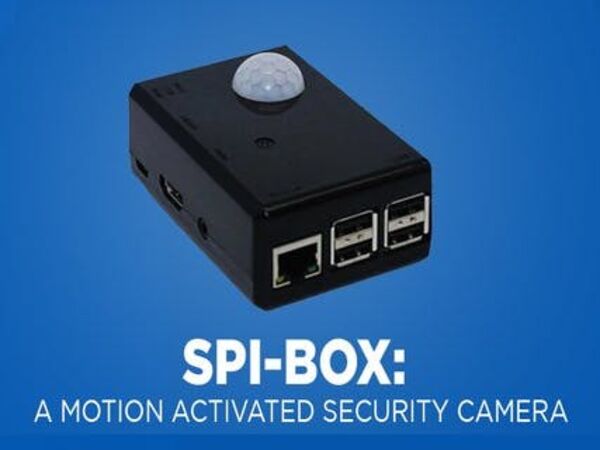
Spi-Box: A Motion Activated Security Camera
"Spi-Box is a Raspberry Pi-based, motion-activated camera designed to use as a DIY kit for beginners and security purposes. Spi-Box is a Raspberry Pi based motion activated camera designed to use as a DIY kit for beginners and security purposes. Spi-Box can send an e-mail notification with an attachment of the captured image or video. Here are the things you will need to set up a Spi-Box: - Raspberry Pi model 2 / 3 / 3B+ models - Spi-Box Case - Raspberry Pi Camera - PIR Sensor - Jumper Wires F-F Keep caution while assembling Spi-Box, better turn off the power supply if you are using as a beginner. Spi-Box Hardware Configuration Please be aware that the bottom half of the case of the Spi-Box is shallower than other SB Components’ cases making the mounting process slightly different: - Line up the HDMI side of the pi with the lower half of the case and ease it into place at a slight angle pressing down gently but firmly until the mounting posts (highlighted in red)click into place in the Pi’s screw mounting holes. - Press the other side of the board down into place gently but firmly until the mounting posts on the GPIO side of the board click into place in the board’s screw-mounting holes." [...]
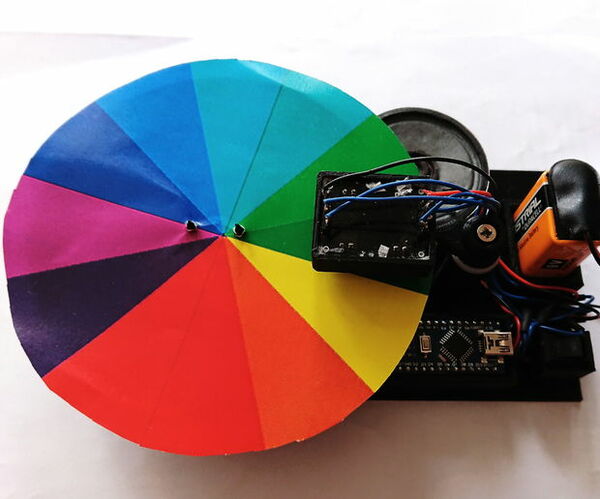
Color Instrument
"This a simple Arduino/3D printing project about colors and sounds. I made this device or as I call it color instrument for activity for kids. Its fun and its a good conversation starter about physics of colors and sound. The most interesting fact about colors, in my opinion of course, is that pink color doesnt exists in physics. I know, I know, you all thinking its a lie, but next time you look at the rainbow try to find pink color! Basically white light is made of all the colors you can see in the rainbow from red to purple." [...]
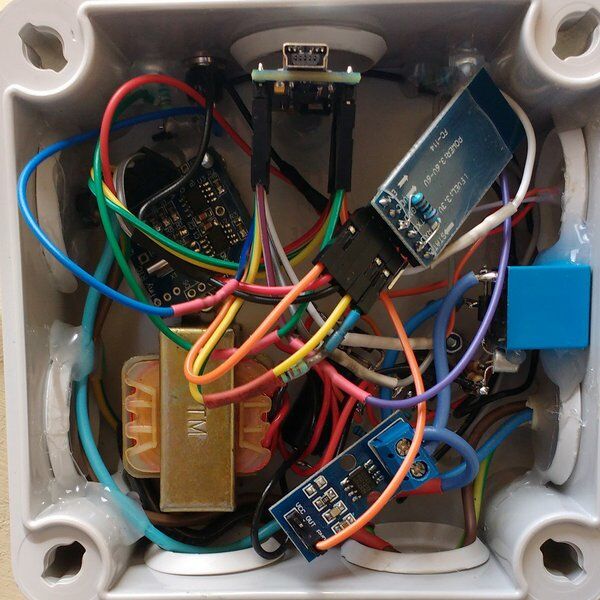
BluePump
"Monitor the phase shift between current and voltage to stop a pump when there is not enough water. For pool filtering. Monitor the phase shift between current and voltage to stop a pump when there is not enough water. In addition to a programming of schedules and durations of filtarge associated with a sensor of the temperature of the water. Control all via Bluetooth on Android. Ensuring the longevity of the relay and the pump." [...]
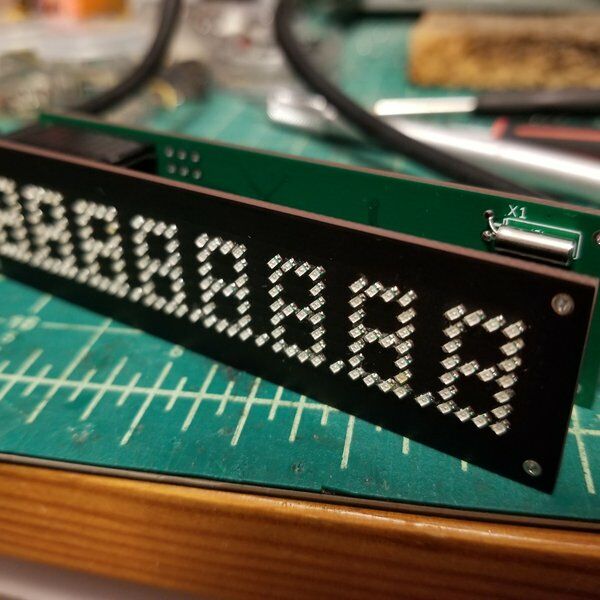
TinyLED Displays
"DIY Tiny LED Displays ... need I say more ... I've seen a few other people experimenting with making custom LED displays using discrete LEDs so I thought I'd like to take my own stab at it. " [...]
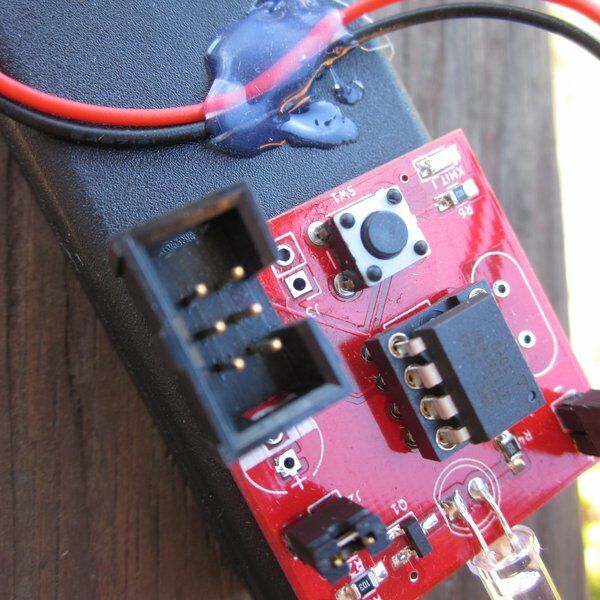
TV-B-On the box
"The thing you need when your TV remote power button fails. A while back the power button on my remote started to fail. It's become harder to get it to send the IR code to turn on the TV. The contact is likely dirty but didn't want to risk destroying the remote by the extreme violence it that would be required to get the shell open. Frustrated, I threw together a quick and dirty solution using one of my Atmega328P Target boards, a AA battery pack, an IR LED, a transistor, a push button, an AMS sample box I had laying around, and the requisite wiring and rubber band to hold it all together. A bit on the crude side, but it works!" [...]
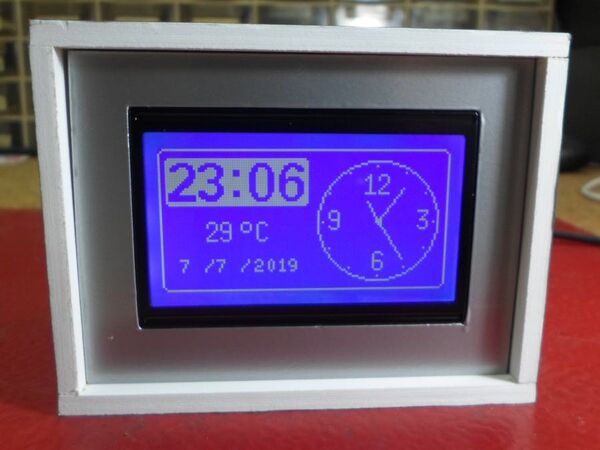
Analog, Digital Clock and Thermometer on 128x64 LCD
"A nice looking clock and thermometer on a large 128x64 LCD screen. On arduinoecia web page is presented Arduino clock with 128x64 LCD graphic display, a potentiometer for adjusting the display contrast, the DS3231 RTC module and a push button. The RTC module is connected to the Arduino on the A4 (SDA) and A5 (SCL) pins. The button is connected to digital pin 3, with the Arduino's internal pull-up resistor enabled via software.The program uses some libraries that you will have to install before compiling. Unzip the libraries and place them inside the LIBRARIES folder of the Arduino IDE. Program have two screens: the first one ( screen_1 ), shows the analog clock, the digital clock, as well as the current date and temperature." [...]
That's all Folks!



